How Do You Hide a Projector Screen?
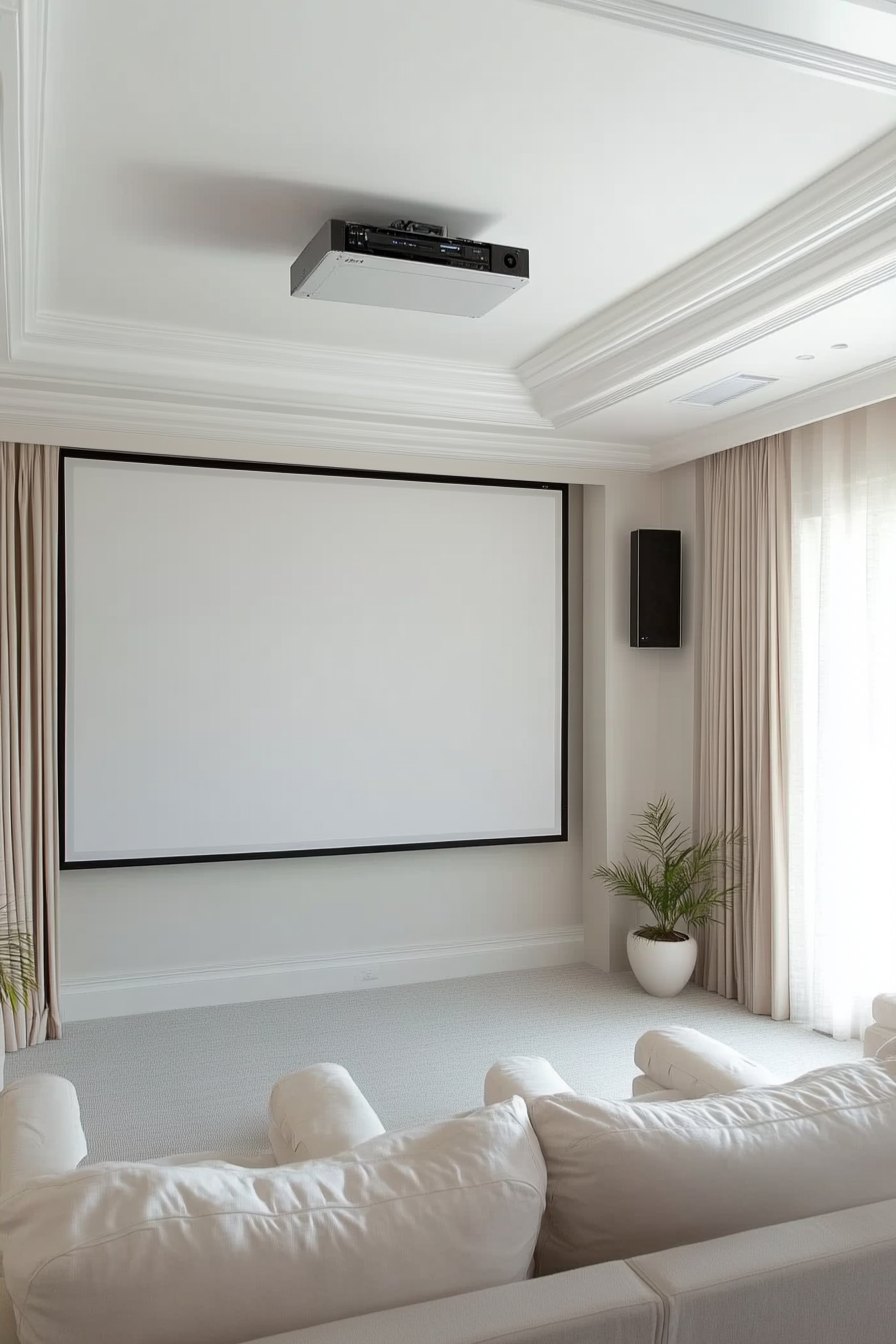
Most people buy a projector so that they can experience larger-than-life visuals from the comfort of their homes – something that even the largest flat-screen television cannot afford (at least not currently).
Many opt for a projector also because they could easily stow away the device and hide the screen out of sight so that the projector and the screen do not mar a space’s design or ambiance – as those black, flat-screen television slabs do.
But not every projector user knows how to neatly tuck away those thin projector screens away when not in use. If you are one of them, keep reading.
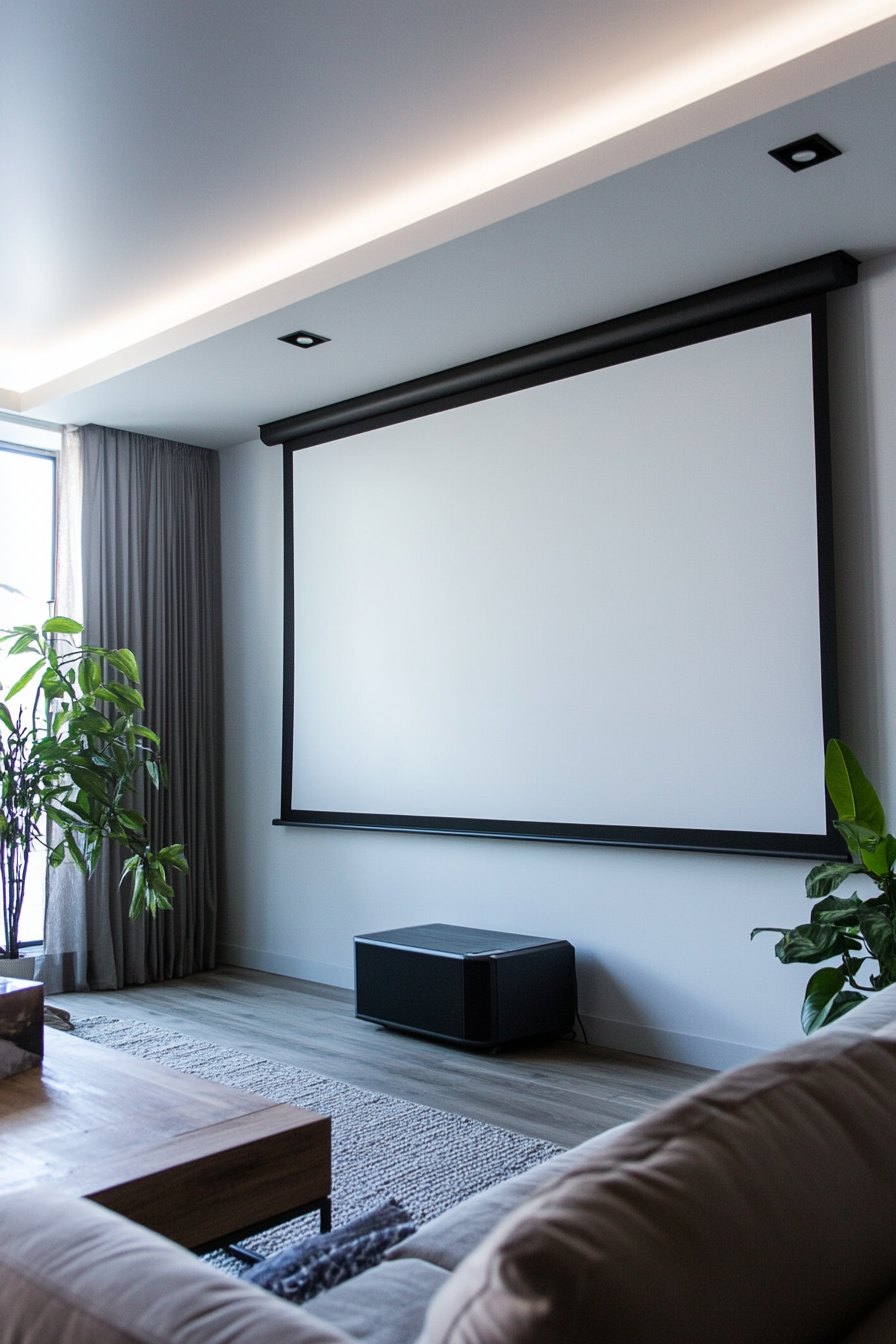
Quick Navigation
How to Hide a Projector Screen
While having a projector screen is great for entertainment, leaving it exposed can sometimes disrupt the overall aesthetic of your room.
A bulky screen can make the space feel cluttered or out of balance, especially in areas designed for relaxation or a minimalist look.
Fortunately, with a bit of creativity, you can hide your projector screen without sacrificing function or style.
1. Built-In Ceiling Recess
One of the most elegant ways to hide a projector screen is to recess it into the ceiling.
With this option, the screen is installed inside the ceiling itself, completely disappearing when not in use.
You can choose between a motorized system that lowers and raises the screen at the touch of a button or a manual option for a more budget-friendly approach.

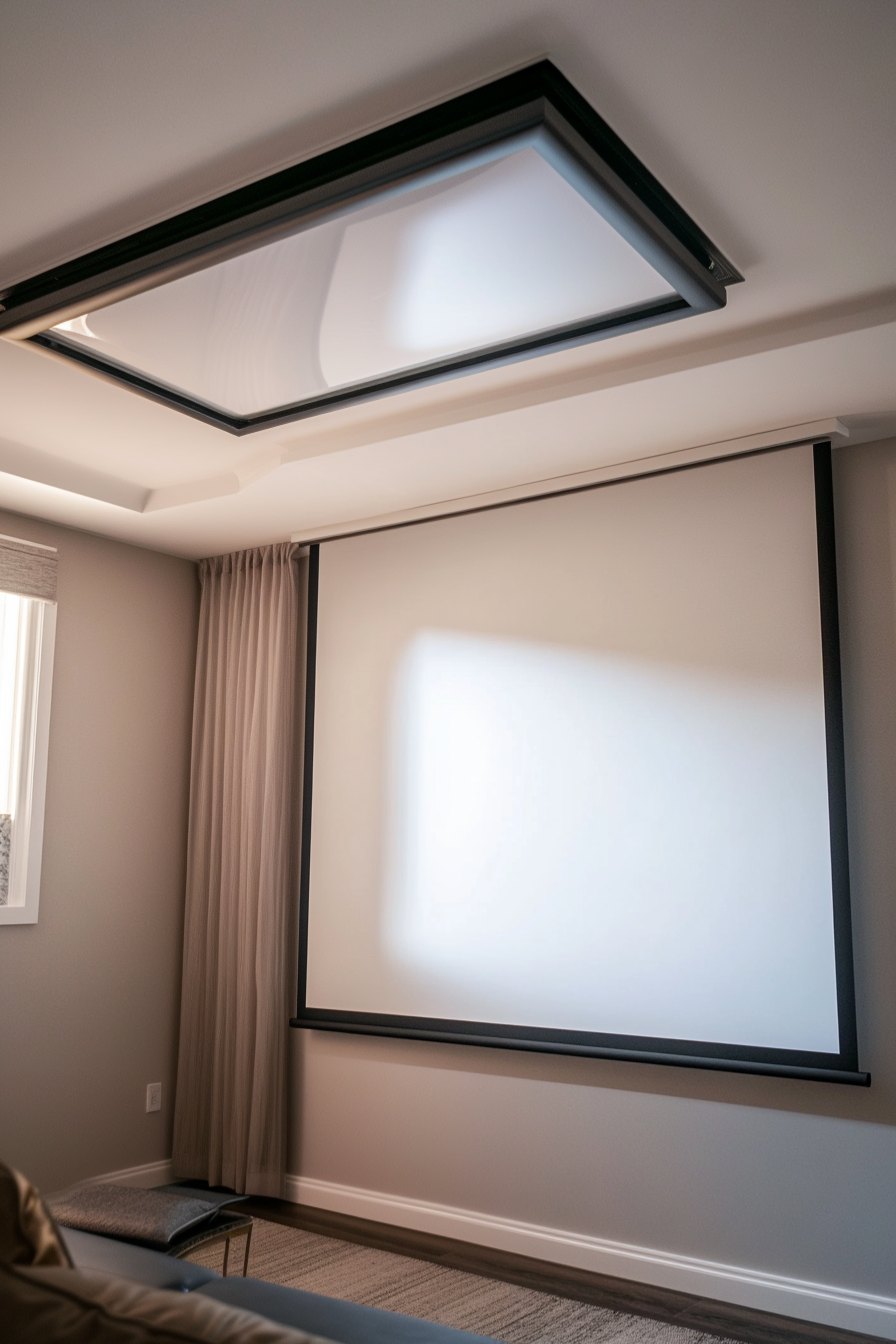
I love this solution because it’s incredibly sleek and out of sight until you need it. It’s perfect for modern spaces where you don’t want any extra clutter on the walls or floor.
Plus, since the screen is stored overhead, it keeps your room looking clean and spacious.
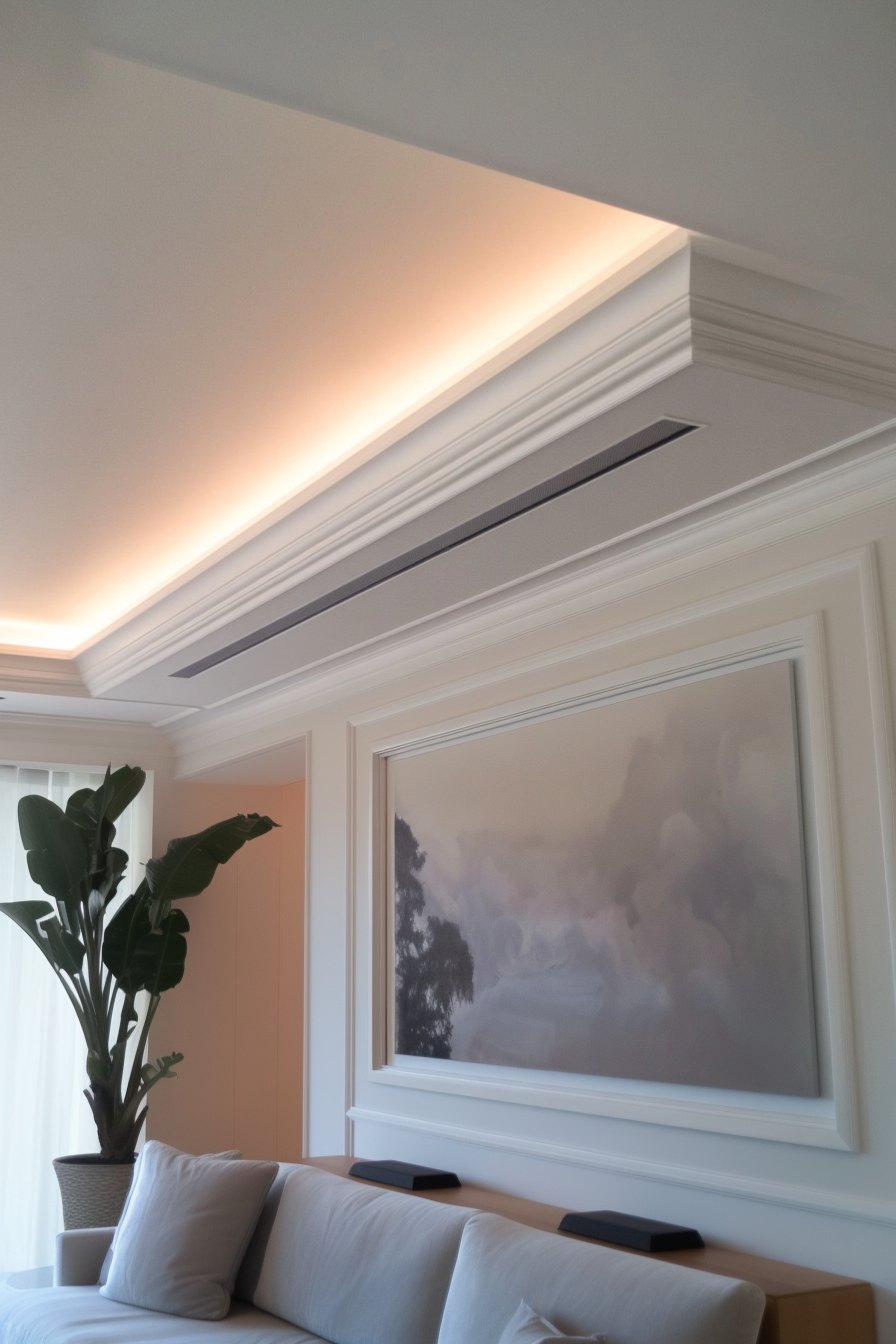
To learn how to install this setup, please read the section How Do You Install a Recessed Projector Screen? below.
2. Behind a Curtain or Sliding Panel
Another stylish option is to hide your projector screen behind decorative curtains or sliding panels.
This method not only covers the screen but also adds a sophisticated design element to the room.
You can choose from a variety of materials like fabric, wood, or metal depending on your style preference.
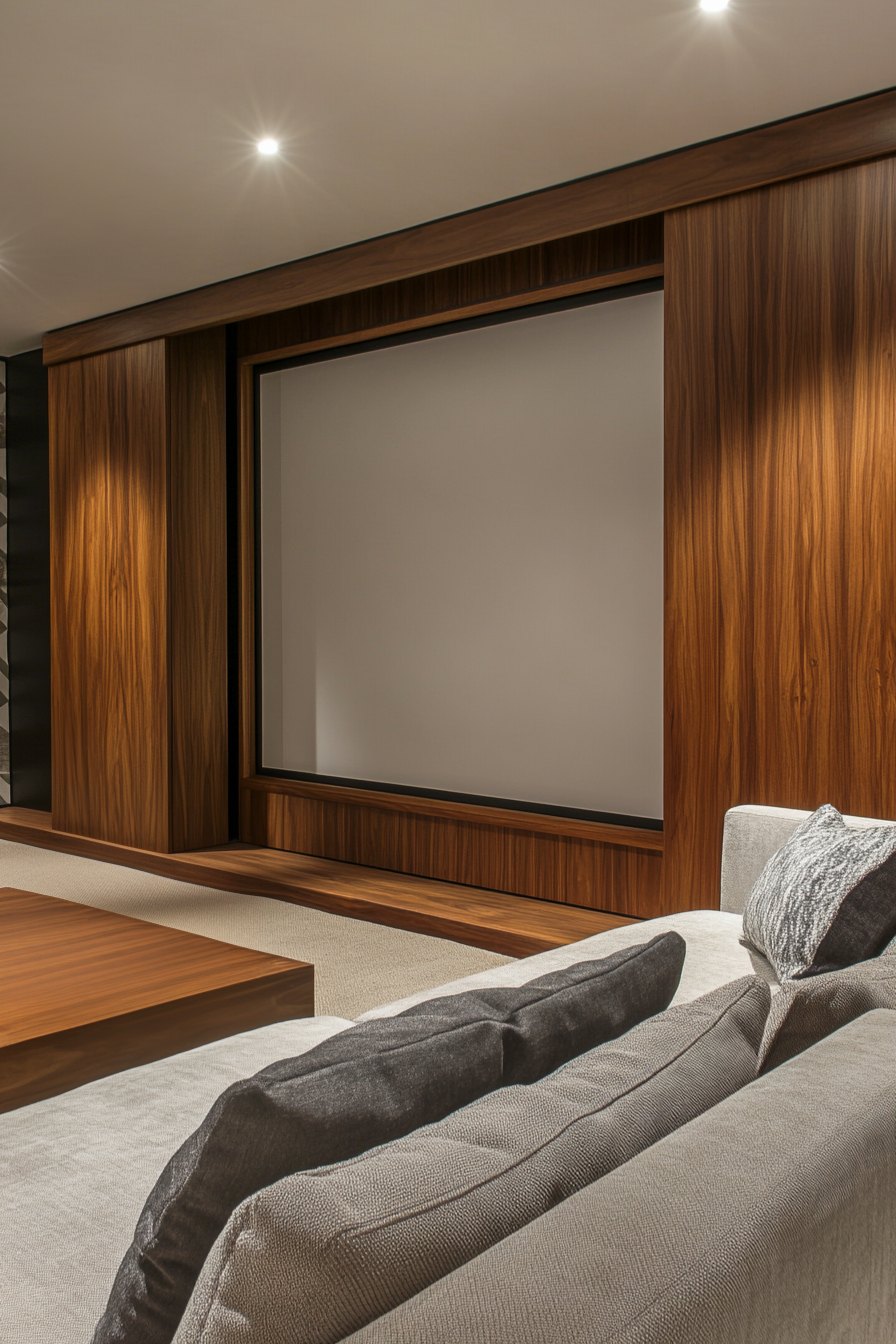
For a softer look, drapes or curtains can complement a cozy living room or bedroom.
Sliding panels, on the other hand, can bring a more modern, minimalist touch. It’s a great way to make your screen practically disappear while doubling as a feature in your space.
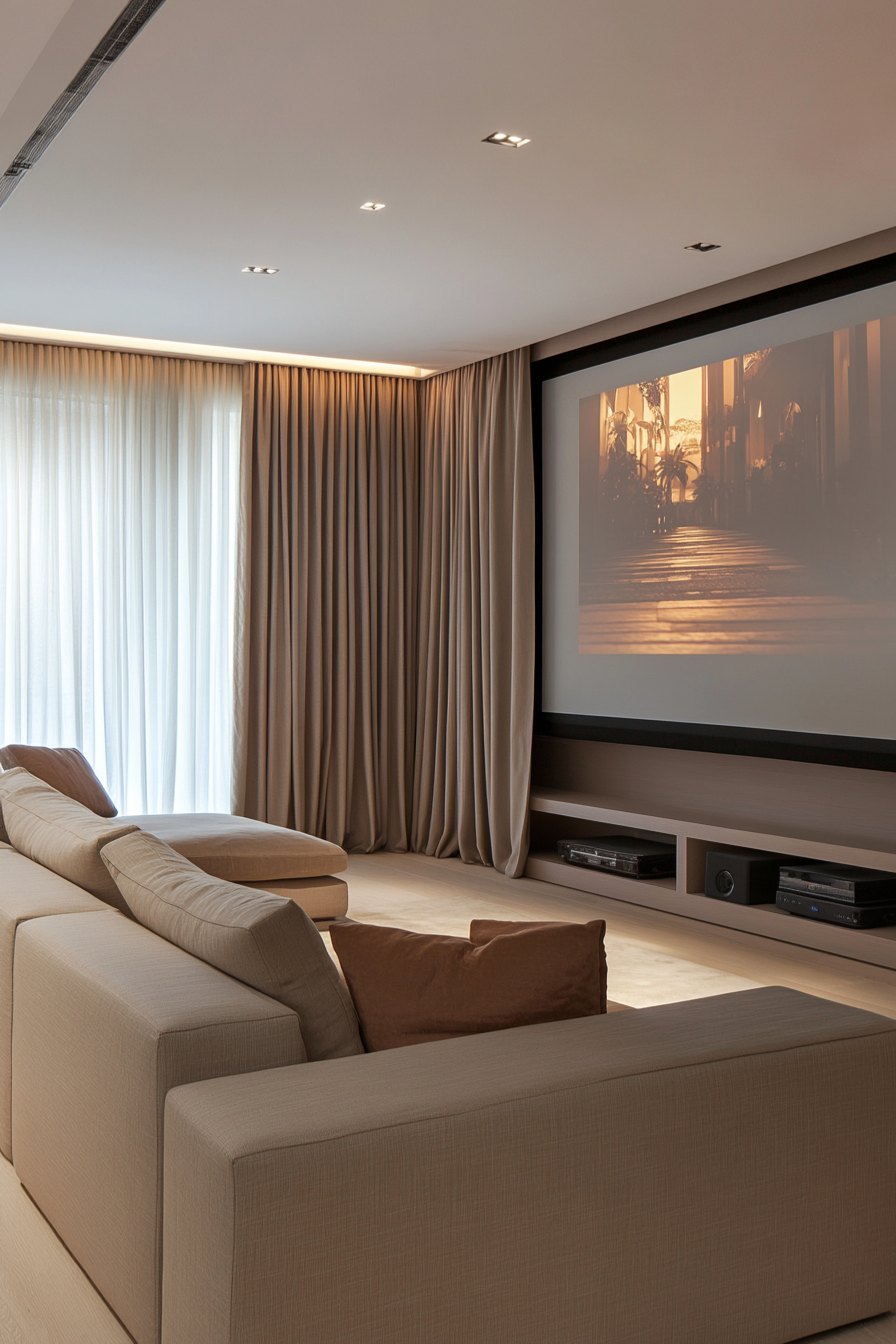
3. Floor-Rising Screen
For a high-tech, modern solution, a floor-rising projector screen might be the perfect option. This type of screen is stored in the floor and rises up when you need it, using a motorized mechanism.
Once you’re done, the screen smoothly retracts back into the floor, leaving no trace behind.
It’s ideal for minimalist spaces where you want everything to look clean and uncluttered.
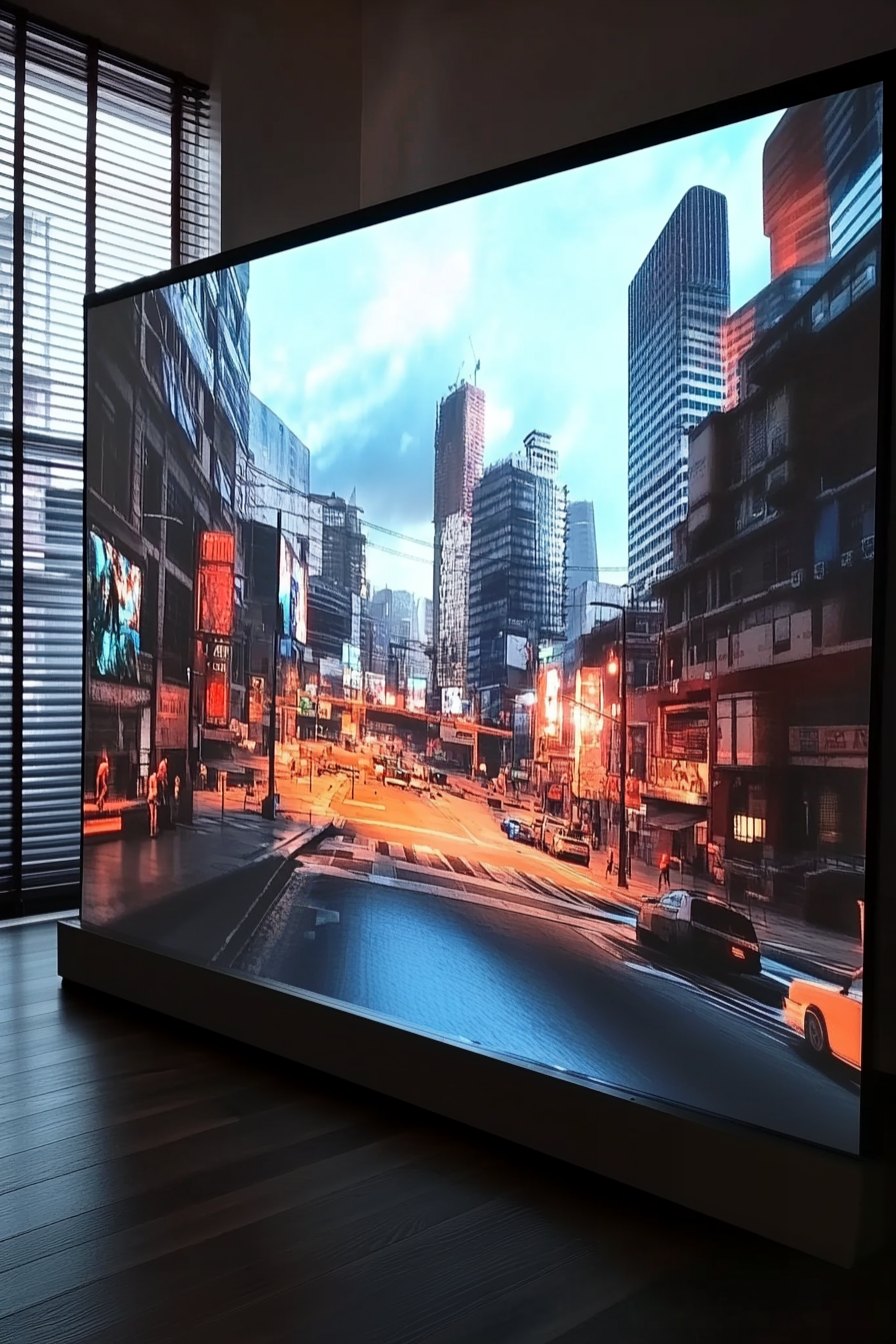
This solution feels futuristic, and I’m a fan because it offers a truly invisible screen when not in use. Plus, it gives a “wow” factor to any home theater or living room setup.
4. Concealed in a Bookcase
A retractable projector screen can be cleverly hidden above a bookcase, offering both functionality and design.
When not in use, the screen rolls up seamlessly, leaving the bookcase fully visible and accessible for storing books, media, or decor.
This setup ensures that the projector screen doesn’t dominate the room, allowing the focus to remain on the rest of the space.
When it’s time for entertainment, the screen glides down effortlessly over the bookcase, creating an instant home theater or presentation space.
This approach not only hides the screen but also maximizes the utility of the wall, combining storage with entertainment.
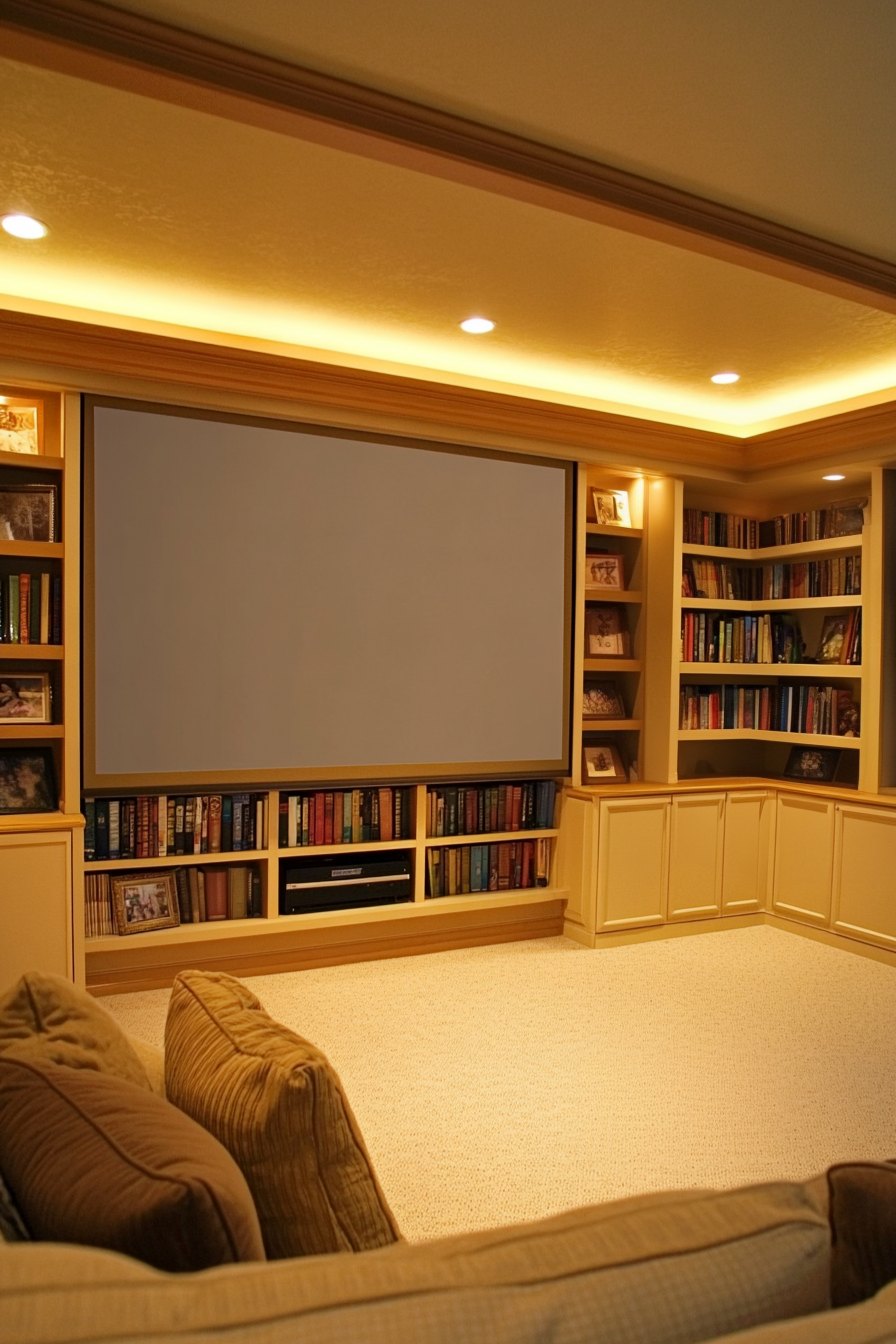
5. Foldable or Portable Screens
For those who don’t want a permanent installation, foldable or portable screens are a great option.
These screens can be easily set up when you need them and folded away when you’re done, making them ideal for small spaces or renters who can’t install permanent fixtures.
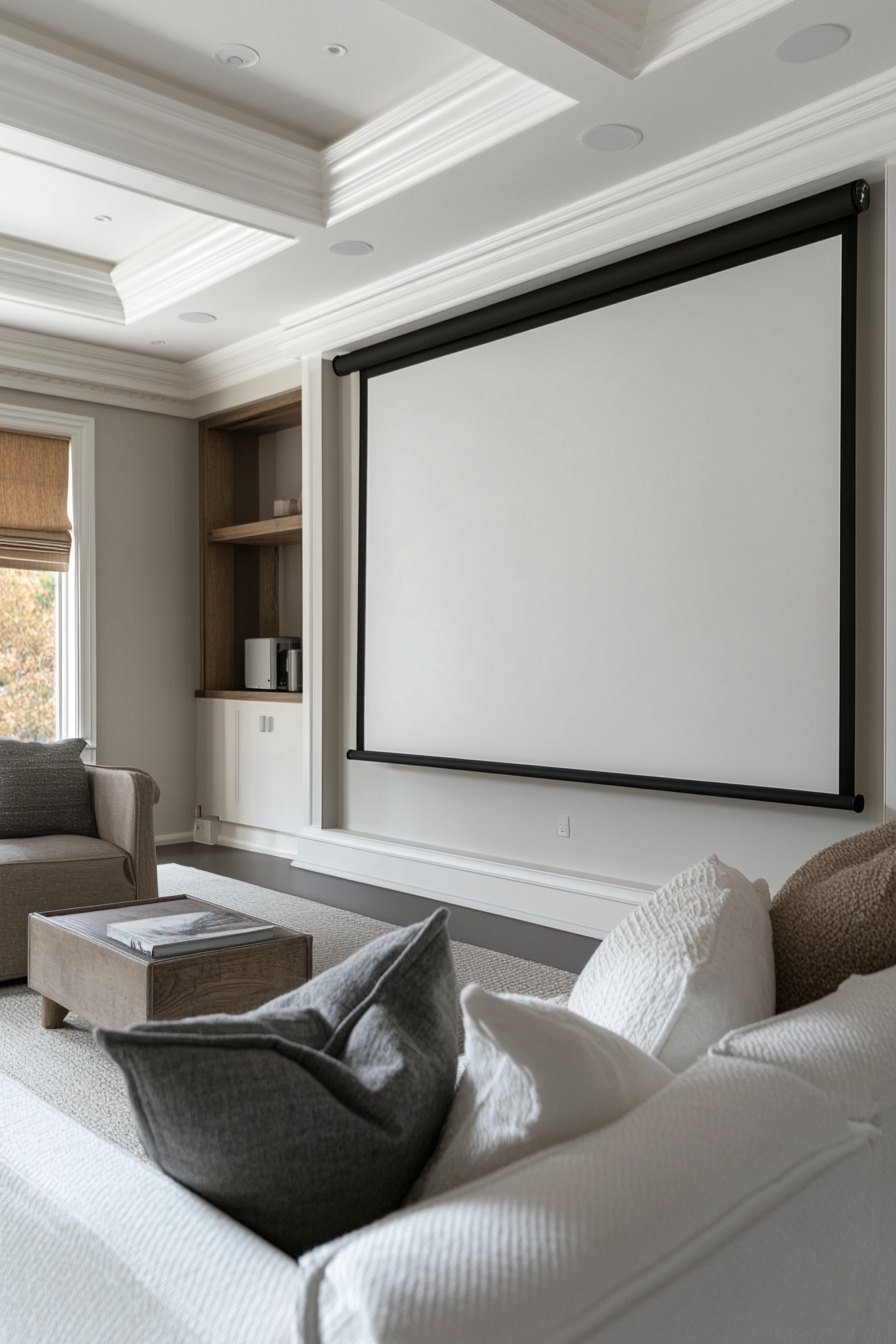
Simply store the screen in a closet or behind a piece of furniture when it’s not in use.
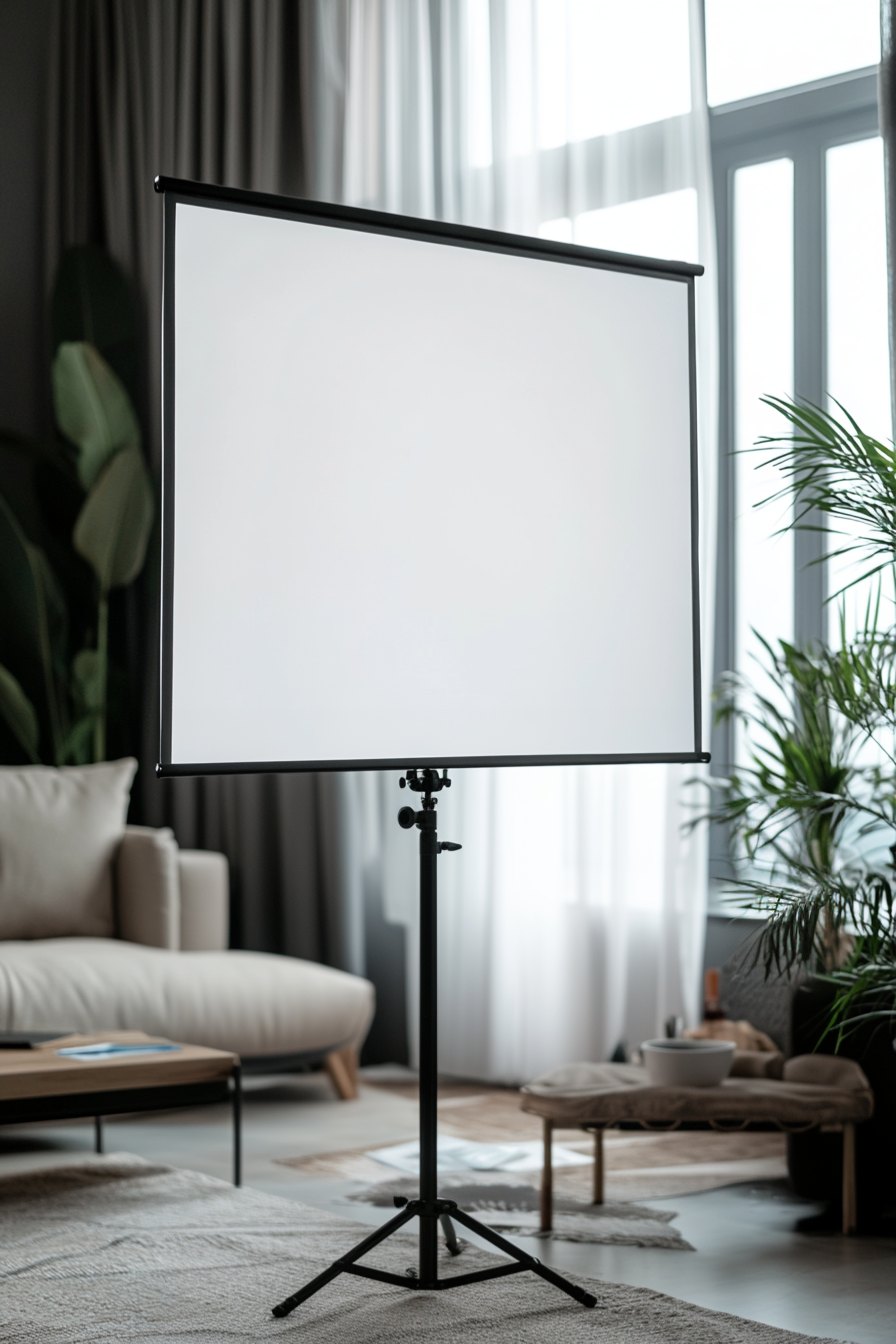
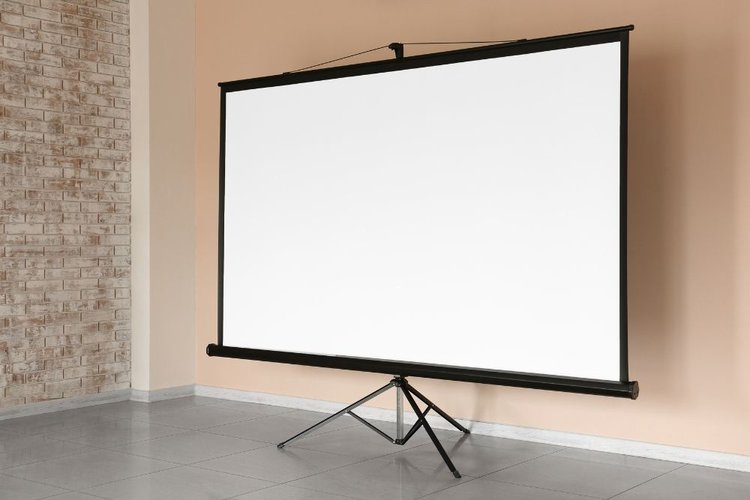
I find this option to be incredibly flexible. Whether you’re moving from one room to another or simply don’t want to commit to a fixed installation, foldable screens give you the freedom to enjoy your projector without any hassle.
How Do You Install a Recessed Projector Screen?
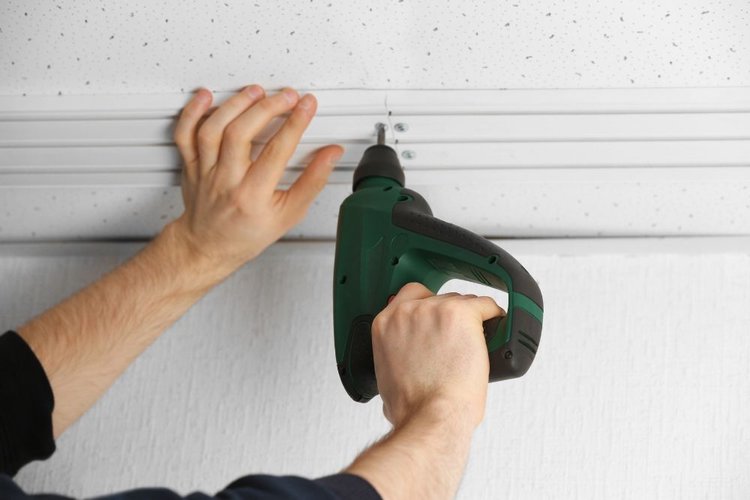
An in-ceiling or recessed projector screen is usually best installed by professionals, especially to get the wiring part right.
If you have never played handyperson in the house before, watching a few YouTube videos or reading multiple how-to articles won’t cut it. You could damage the ceiling and, even worse, hurt yourself.
But if, on the other hand, you’ve used hammers, hand tools, tape measures, levels, etc., to good effect before, following the instructions below won’t be that tricky. Just make sure you have help on standby.
You’ll need the following items for the job:
- Mounting brackets
- Threaded rods
- Adjustment hex tools
- Infrared sensor wiring
- Cutting blade (keyhole saw , for example)
The items usually come bundled in with the projector.
Once you have your tools handy, follow these steps:
P.S. The instructions below apply to both coffered and flush ceilings.
- Ascertain where you exactly want to position the screen in the ceiling.
- Measure the projector screen and also the plastic coverings.
- Use the measurement to mark the area in the ceiling. Make sure the area measured is not too close to the wall (at least five to six inches away).
- Double-check your measurements before proceeding to cut the ceiling portion out.
- Use the cutting tool to cut out the marked portion. Pay attention to the holes you drill. You don’t want them to be too big or narrow. They must be identical to the holes on the brackets.
- Attach the mounting brackets to the projector screen using nuts and bolts. Tighten them up using a wrench.
- Elevate the screen housing and set it in place with the brackets playing anchors.
- Once done, place the plastic covers to provide the finishing touches.
If installing the projector screen in your attic, use the threaded rods to hold the screen’s housing at both ends from the top, as the lower deck may not be strong enough to hold the screen in place. The threaded rods will share the load with the mounts or offer some much-needed rigidity.
To learn how the electronics are put into place or how the IR sensors work for the projector screen to descend and go back in automatically, watch this video: (The video also demonstrates the installation process.)
Why Hide a Projector Screen?
If given a choice, most people would want to make their projector screens discreet. And there are solid reasons for that.
To Achieve a Cleaner Look
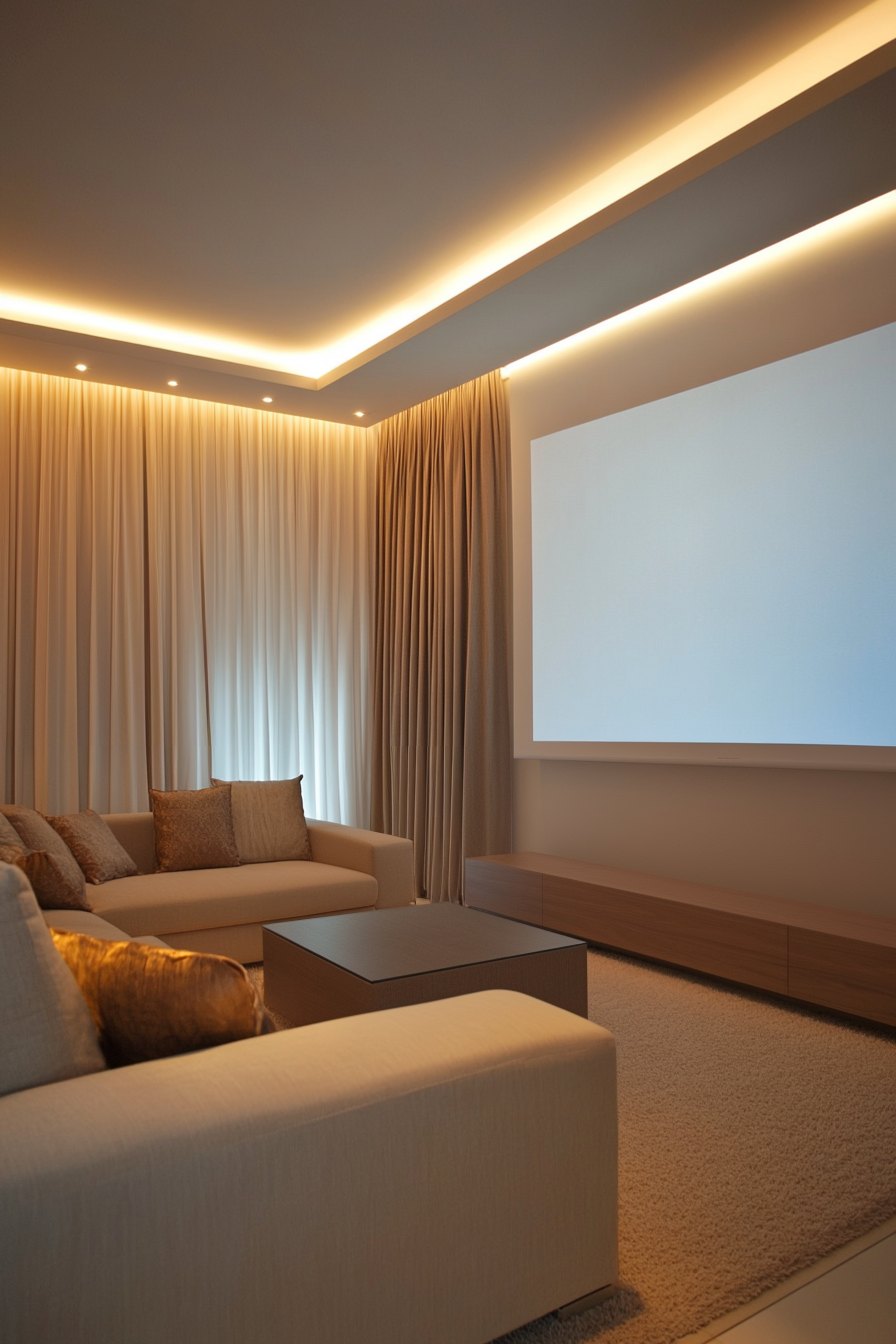
As alluded to above, projector screens don’t blend in with the overall design language of a modern space. They fare poorer than televisions.
Smart TVs and the audio gear and other paraphernalia that tag along have become so ubiquitous; it’s no longer too awkward to see a black slab in the middle of a room. Professional interior designers draw out their designs knowing they’ll have to carve out wall space for a TV.
Projectors and their screens, on the other hand, aren’t as popular or haven’t proliferated enough to become as homogeneous, yet.
When fully wielded, a projector screen pretty much sticks out like a sore thumb. Even a white screen with a white background won’t look good because the screen juts out or doesn’t become one with the wall.
From the sides, the incongruence is even more glaring.
To Make Way for the TV
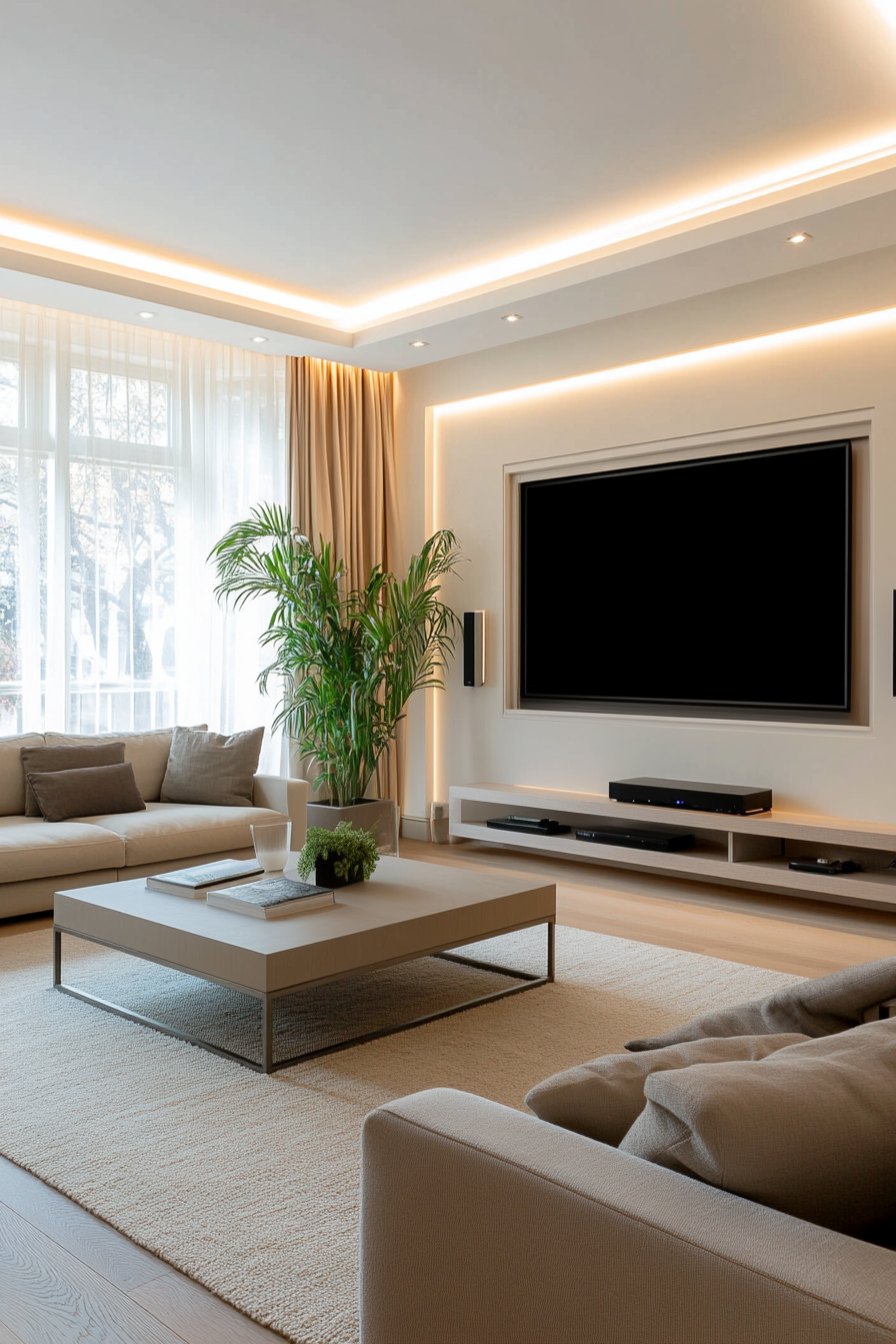
Even in rooms or spaces dedicated to media consumption and entertainment, a projector screen that retracts back and hides completely is a lot more aesthetically pleasing than the stationary ones.
With a screen that can move out of the way, it becomes easier to use a television or switch between the two whenever the need arises. Most people with a dedicated entertainment room usually have a television in tow and do not entirely depend on a projector for all their video entertainment requirements.
To Let Air and Light Pass
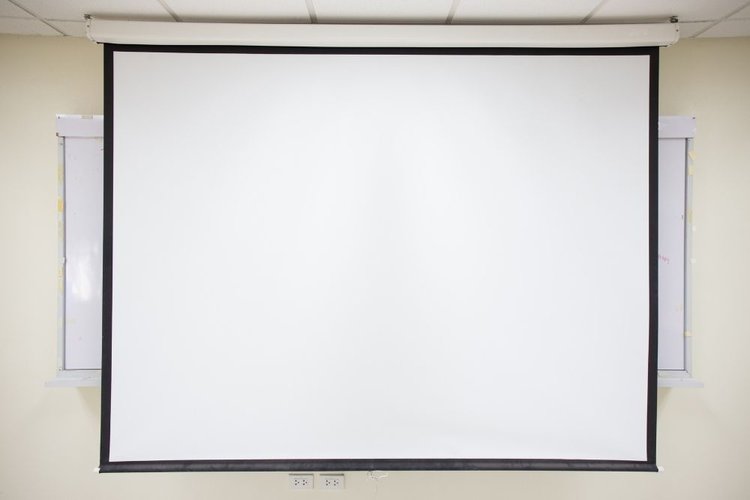
In most homes, a projector screen could be pulled out right before a window. In educational institutions and business meeting rooms, projector screens are pulled down in front of a whiteboard.
Since a projector screen gets positioned before a whiteboard or a window, it must move out of the way when not used.
Conclusion
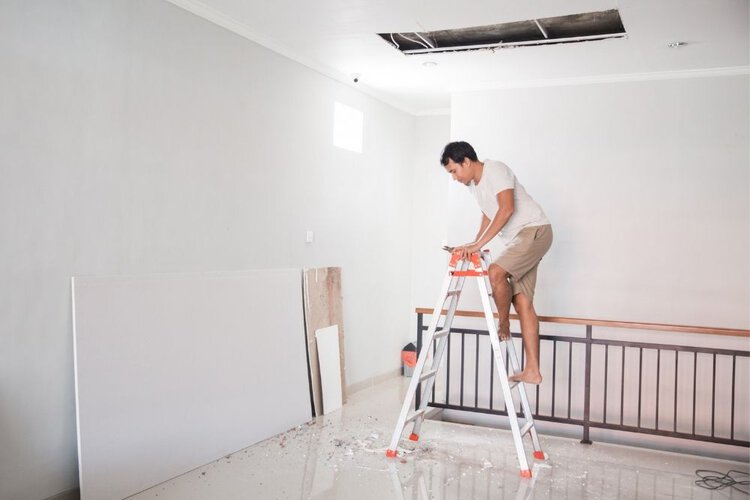
Installing a retracting projector screen is easier said than done. The setup may look pretty straightforward. But the amount of planning and effort needed to pull off the task comes to the fore only once you start working on the job.
And if the objective is to hide the screen when it’s not being used, you’ll have to be a lot more meticulous with the measurements, the tools, the projector screen you pick, and the process in general.
Just to reiterate, hiring a professional is always the best approach to install a recessed projector screen.
But if you cannot afford one, find one, or would like to save money and dive in yourself, this article hopefully provided you all the information you needed to get rolling and complete the project.
Catherine Tramell has been covering technology as a freelance writer for over a decade. She has been writing for Pointer Clicker for over a year, further expanding her expertise as a tech columnist. Catherine likes spending time with her family and friends and her pastimes are reading books and news articles.

